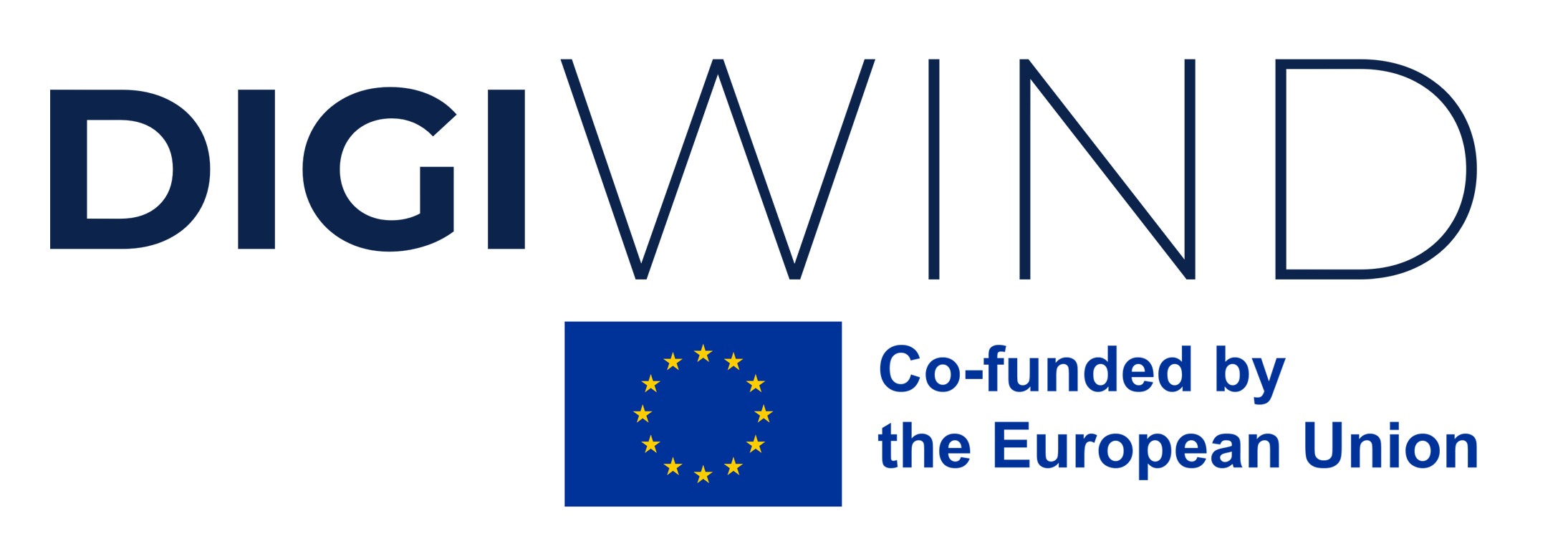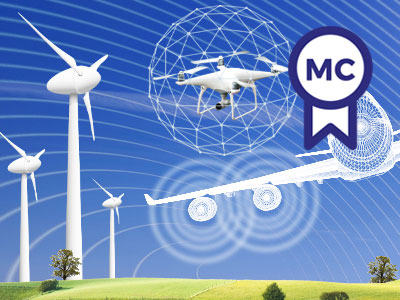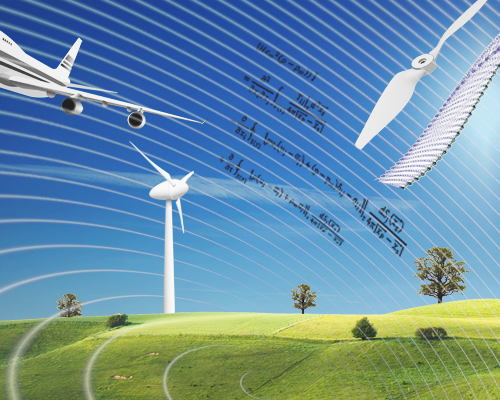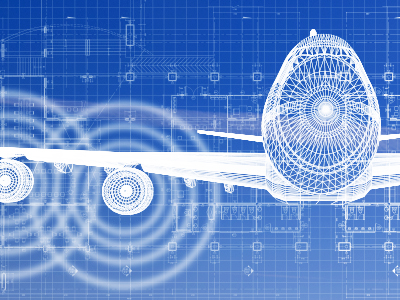Overview
Learn how to measure noise and experimentally analyze noise‑source and reduction mechanisms, tackling the relevant fluid dynamics and acoustic parameters.
Companies are increasingly in need of professionals who can design, prototype and test aerodynamic components with integrated noise-reduction technologies.
In this course you will acquire the knowledge and tools to analyze and measure noise sources from aerodynamic systems, including microphone and beamforming applications.
More advanced aeroacoustic analogies based upon velocimetry will also be discussed, including some basics on the uncertainty of the measurements. You will review fundamental aeroacoustic principles and propagation theories and their applications to open and closed wind‑tunnels as well as for in‑field measurements.
Apply this knowledge to your own work
After learning the fundamentals of aeroacoustic sources of noise, we will analyze together how to use pressure transducers and microphones for the analysis of noise-source mechanisms. During the course you will learn how to apply the knowledge gained to practical and industry-relevant designs.
This course includes special lectures from experts in aeroacoustic measurements. You will also gain access to online tools and resources to tailor your formulations to your own test‑cases, and you will receive personalized advice and feedback from international experts in the field of aeroacoustics.
After taking this course you will be able to:
- Analyze fundamental aerodynamic noise mechanisms
- Discuss and decide upon the most relevant acoustic parameters to be measured for a specific aerodynamic system
- Get acquainted with fundamental and advanced measurement techniques for aeroacoustics
- Design a simple experimental setup for investigating or isolating sources of noise
- Identify the most important aerodynamic parameters that affect the noise uncertainties in wind‑tunnel and in‑field measurements for aeroacoustics
This course has been supported by the DigiWind project, co-funded by the European Union under Grant Agreement No. 101122836. Views and opinions expressed are however those of the author(s) only and do not necessarily reflect those of the European Union or the European Health and Digital Executive Agency. Neither the European Union nor the granting authority can be held responsible for them.

Details
Knowledge of the fundamentals of aerodynamic flows is important for an accurate aeroacoustic measurement. This course will offer coverage of the main principles required to successfully follow the course. Most textbooks and courses on this topic are either limited to an analytical treatment of relatively simple problems, or they focus on operational aspects without a thorough treatment of the physics.
Isolating sources of noise
Isolating noise sources from single components and evaluating their contribution in the overall system while at the same time filtering the environmental noise is a complicated task.
While measuring integral loading parameters can be done in a conventional wind‑tunnel, the measurement and evaluation of the sound produced is much more difficult, due to the interaction of the solid surfaces with the acoustic waves produced (i.e. reflection, reverberation etc.). Therefore, it can be difficult for engineers to isolate sources of noise in particular frequency ranges.
This course is part of our Program in Aeroacoustics. The complementary course Aeroacoustics: Noise Reduction Strategies for Mechanical Systems explores dedicated noise reduction strategies to improve the aeroacoustics of potential design solutions.
Is this course for you?
This course offers career‑oriented benefits depending on your professional background and interests:
- Professional engineers with an experimental or numerical background(e.g. mechanical, aerospace, electric, applied physics, mathematics).
Whether working in the aerospace/aerodynamic/wind energy industry or on the aerodynamic and aeroacoustic design of a specific mechanical system, this course will be beneficial to you due to its focus on multi‑disciplinary experimental design, which accounts for signal processing, aerodynamic and aeroacoustic parameters. You will benefit from an improved capacity to become more effective in decision‑making within multi‑disciplinary projects.
- Young professionals or entrepreneurs interested in experimental design and evaluation with the target of research or certification.
This course can prove a great addition to your portfolio when considering a spin‑off in engineering and mechanics, where technology needs to encompass several disciplines to produce the best solutions.
- Students at the MSc/BSc level aiming to enter the world of experimental or numerical aerodynamics/aeroacoustics.
If you intend to work in the aerospace/propulsion/wind energy industry or you are interested in pursuing a MSc degree in aerospace engineering, this course can bridge the gap between aerodynamics and acoustics, with a practical view on the important parameters to be measured for a variety of mechanical systems.
Course structure
The course has four modules focusing on signal processing, measurements of pressure fluctuations, advanced correlations through numerical techniques applied to experimental data, measurements in‑field and in anechoic tunnels. Participants will be able to choose examples in different systems depending on their interests or experience. Each module has a workload of approximately six hours. For successful completion of the course and to receive the Certificate of Completion you should pass at least three regular modules. Regardless of the module choice, the content of all other modules can be accessed even without fully completing their assignments.
Modules
Module 1:
- Introduction to signal processing and noise sources
- Summary of the basics of sound propagation and acoustic analogies
Module 2:
- Basics of single microphone operation and measurements in near-field and far-field configurations
- Beamforming technology and response of different microphones
Module 3:
- Introduction to velocity and pressure measurements
- PIV in aeroacoustics
Module 4:
- Measurements in wind-tunnels
- Basic application of in field measurements
Assessment
Each module includes a small assignment, quizzes and exercises. These can vary from straightforward multiple‑choice questions to more detailed calculations.
Resources
All necessary course materials will be provided online, you do not need to purchase additional books. You will also gain access to online‑tools and resources to tailor your formulations to your test‑cases.
Qualifications
Certificates
If you successfully complete this course you will earn a professional education certificate and you are eligible to receive 3.0 Continuing Education Units (CEUs).
Chartered Engineering Competences
All our online courses and programs have been matched to the competences determined by KIVI’s Competence Structure, a common frame of reference for everyone, across all disciplines, levels and roles.
These competences apply to this course:
- A1: Extend your theoretical knowledge of new and advancing technologies.
- E3: Undertake engineering activities in a way that contributes to sustainable development and a circular economy.
Admission
This course is primarily geared towards working professionals.
Prerequisites:
Knowledge of fundamental aerodynamics and calculus is an asset to the course. However, the course will fill in any gaps of knowledge in physics and basic signal theory.
Contact
If you have any questions about this course or the TU Delft online learning environment, please visit our Help & Support page.



